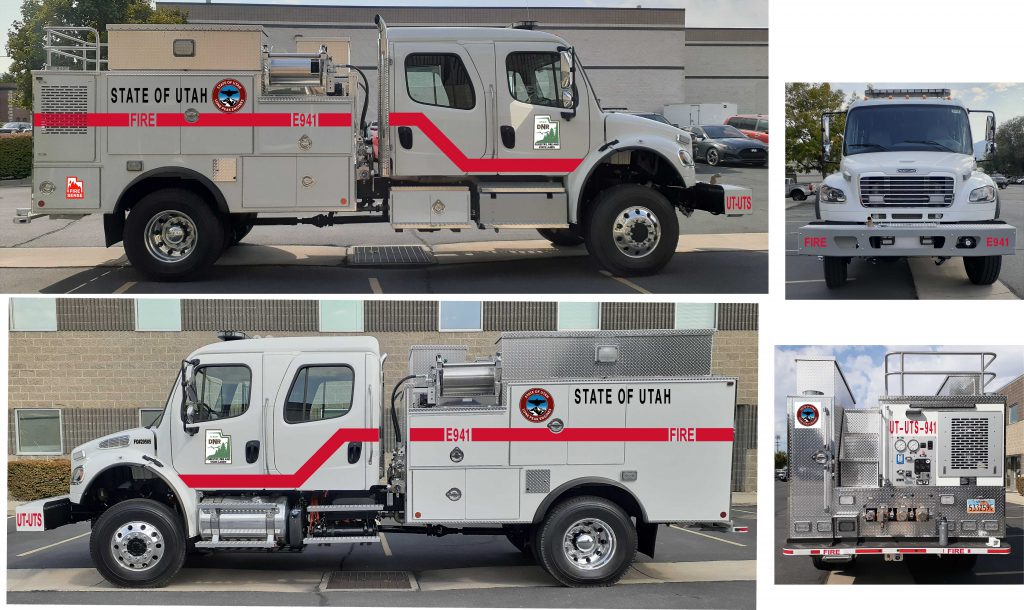
The Lone Peak Engines are a State of Utah wildland fire suppression resource based out of the Lone Peak Conservation Center (LPCC) in Draper, Utah. The engines are hosted and sponsored by the Utah Department of Natural Resources (DNR), Division of Forestry, Fire, and State Lands (FFSL) and currently, consist of two Type 3 wildland engines new as of 2022.
Season Overview
The Lone Peak Engines’ season typically begins in early May and continues through October. The season begins with a two-week critical training that includes physical conditioning, classroom learning, and training exercises. Upon completion of critical training, the engines become available for national assignments and remain available until the end of the season. While not engaged in fire suppression or management, the engines complete fuels reduction projects throughout the state. These projects typically require working and camping in remote locations.
Engine Dynamics
Each engine is staffed with five personnel: an engine captain, engine operator, and three crewmembers. They have a tank capacity of 500 gallons and a pump capable of pumping 500 gpm at 150 psi. The engines are often utilized in structure protection, rolling attack, supporting burning operations, and mop up. It is not uncommon, however, for the engine crew to be working away from the engine completing assignments such as digging fireline, falling trees, portable pumping operations, or serving as a lookout. We are committed to being a well trained, highly capable, and extremely reliable resource.
Training and career development are an integral part of the Lone Peak Engine program. We believe that the more knowledgeable and capable our crewmembers are, the better we can accomplish our goals. Through a partnership with the Utah Fire and Rescue Academy and classes taught here at LPCC, we are able to provide crewmembers with the classes necessary for their development and advancement. Also, due to the number and diversity of resources based out of LPCC, there are opportunities for detail assignments.
History
Lone Peak Engine program was established in 2001 with five Type-6 engines based out of the
Lone Peak Conservation Center, in Draper, Utah. The program now staffs two Type-3 engines. One
unique feature of the Lone Peak engine program is that we are a state resource without a specific
response area, allowing mobility throughout the State of Utah for project and the entire country for
fire support.
